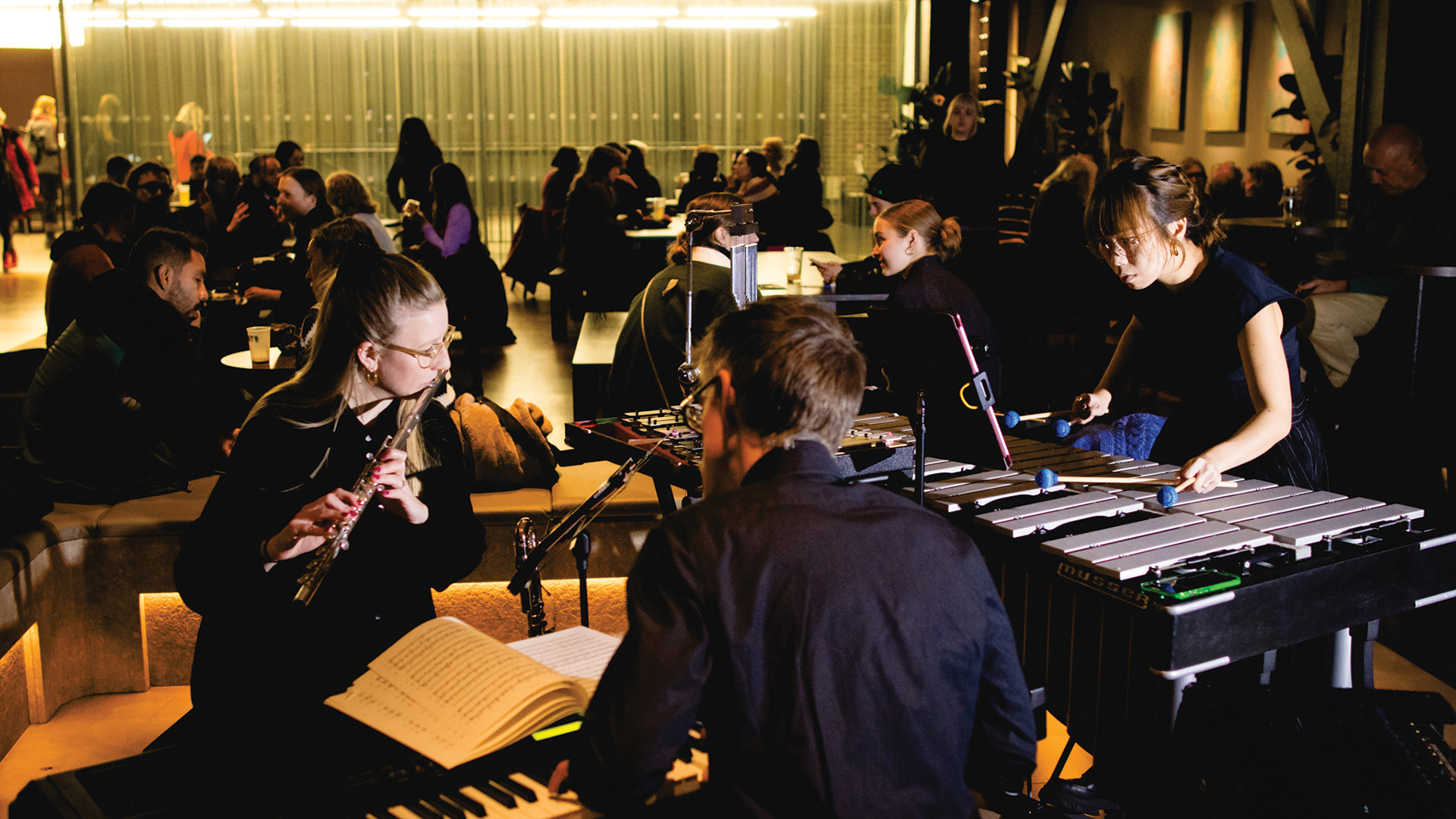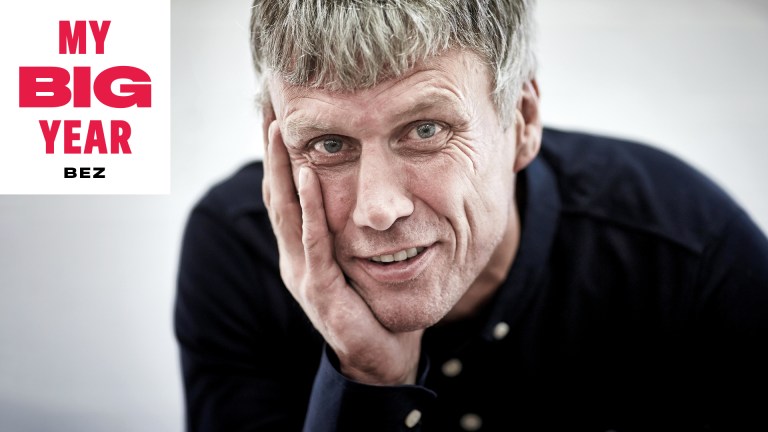The flautist alternates between two notes, each extended with careful control. On either side, a percussionist and pianist scatter sounds, forming melodic stepping stones. The alto flute is replaced by piccolo; now the notes are higher, now the timbre flutters. Friday night in a London bar continues around this musical triangle. In the outer corners, friends chatter; hopes and concerns are shared. But in the immediate tessellation, we watch and listen: the glockenspiel tolls into darkness.
The glacial pace of the sparse music might seem like an odd choice for a late night at the Tate Modern, where DJ sets fill the cavernous Turbine Hall. But there’s an ideal reason why this ethereal music by Morton Feldman is being performed here (below): the piece is an elegy for the Canadian-American artist Philip Guston, the subject of the gallery’s lauded retrospective (on until 25 February).
Change a Big Issue vendor’s life this winter by purchasing a Winter Support Kit. You’ll receive four copies of the magazine and create a brighter future for our vendors
For Philip Guston (1984) is a gently kaleidoscopic piece that seems to go nowhere and everywhere. The sense of disorientation is in part due to its structure; like many of Feldman’s works it is incredibly long –
lasting nearly five hours it rivals Wagner for the concentration it demands from musicians and listeners. When Aldeburgh Festival programmed a complete performance in the summer of 2018, the concert began at sunrise, with attendees encouraged to bring sleeping bags so they could comfortably doze. At the Tate event, the ensemble broke the work into 30-minute chunks, losing some of the mesmeric quality.
This was regained in the exhibition, where early Guston works nudge surrealism: Nude Philosopher in Space-Time (1935) depicts a seemingly random collection of objects; Bombardment (1937) features a cape-wearing gas-masked body. However, it’s Guston’s later works that are the most controversial – and the reason that this touring collection has been several years in the making.
- Terezín: Music the Nazis couldn’t silence
- How the National Youth Orchestra is levelling the playing field
Having addressed racism through art for much of his career, Guston (1913-1980) went on to develop a series of hooded figures representing the Ku Klux Klan. It wasn’t the subject matter that offended his colleagues – including US composers Morton Feldman and John Cage – it was his return to figurative drawing. In Flatlands (1970) two klansmen appear in a pink-hued cartoonish landscape, while in The Studio (1969) a hooded artist paints a self-portrait.









